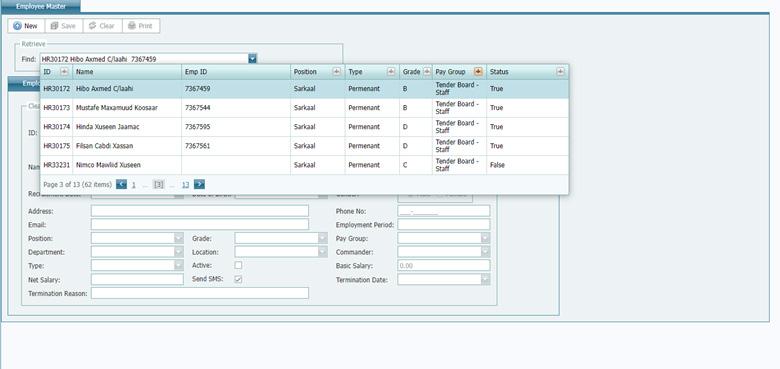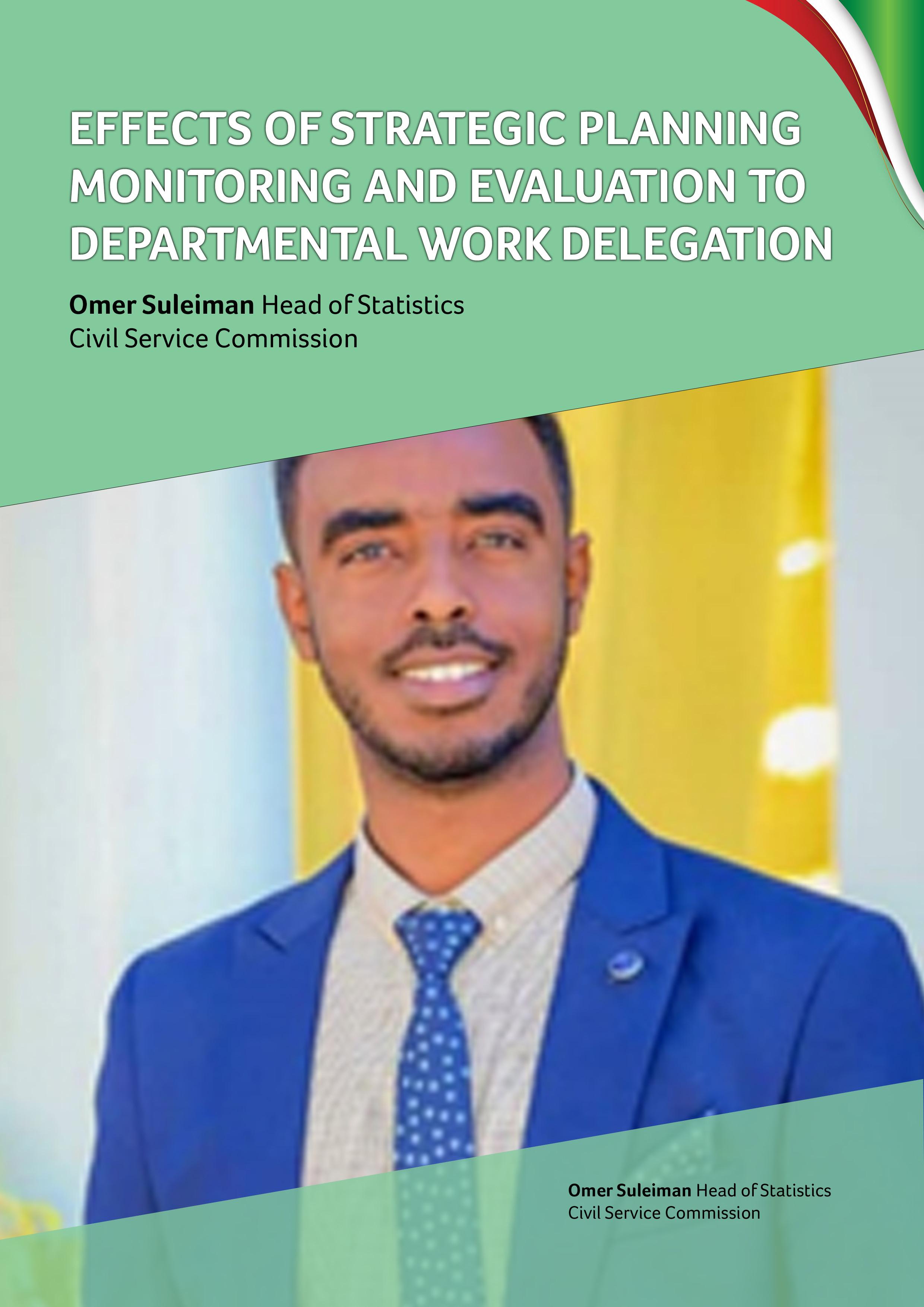
8 minute read
Effects of strategic planning monitoring .......
Strategic direction refers to the plans that need to be implemented for an organization to progress towards its vision and fulfil its goals. In other words, Strategic direction is the long term or medium term initiatives, while implementation has sub divisions of strategic objectives in to achievable activities and milestones. Despite the nature of the organization, strategic plan has a universal definite standard but organizations are different in short term plans depending on the scope or capacity. The strategic plan is the core or the base that guides what any industry is trying to do or doing, action plans are drawn for every certain period of strategic term to achieve the desired results and goals. The evidence of success for nonprofits is not primarily financial (profit); it is accomplishment of mission. According to (Michael J. Allison and Judith Kaye, 2015), Strategic planning should be done because it helps an organization to increase the impact of its work—to accomplish more of its mission—by helping leaders be intentional about priorities and proactive in motivating others to achieve them. Non-profit organizations set strategic plan for achieving their goals or impact. Strategic planning monitoring and evaluation was almost not effective within Somaliland Civil Service Commission as it was founded with Somaliland Nation. The second National Development Plan (NDPII) aimed at achieving Somaliland Vision 2030. The main goal for Somaliland Vision 2030 is stable, democratic and prosperous country where people enjoy a high quality of life. The CSC strategic plan contributes to pillar 3 of the Somaliland national vision 2030 of good governance that promotes accountable public sectors (CSC Strategy, 2020-2024). The CSC is desirous to implement strategies that will equip civil service with the right qualifications, right placement and conducting regular monitoring to assess how MDAs are delivering the services to the community (CSC Strategy, 2020-2024). To get effective implementation of these strategies Civil Service Commission needed to conduct studies about the suitable plan to execute and achieve these goals. To achieve this, planning department of CSC managed to formulate Logical framework, M& E Plan and annual operational plans. These frames and plans are based on CSC Five year strategic plan which is clearly elaborating results framework, activities, outcomes and objective hierarchy. This brought that every department to take full responsibilities of its outcomes they host or accountable to the intended activities.
Advertisement

Monitoring and evaluation plan is used to follow up activity achievement on monthly, quarterly and yearly basis since monitoring reports is produced twice a year. Mid-term evaluation of outcomes is designed to take twice during strategic term based on log frame and final evaluation is planned to be the end of the strategic term which is five years to assess Process, outcomes, objectives, effectiveness, efficiency, impact and sustainability.
There was a big challenge for breaking down activities into lower sub-units due to lack of decentralization and lack of research about this issue. For the last two years, during the second year of the strategy implementation, logical framework for CSC in line with strategy was developed.
Role of Strategic Planning, Monitoring and Evaluation to CSC Departmental Work Delegation
According to the (Omar Suleiman, 2021), he demonstrated his study about the effect of PLM&E to CSC department work delegation. He applied Pearson’s correlation coefficient to explore the level of association between these two factors:
Independent Variables Work Delegation to CSC Departmental Staff (Constant) Civil Service Commission Strategic Planning, Monitoring and Evaluation 0.65
This incorporating the correlation coefficient model was used to discover the role or impact that the CSC strategic planning, monitoring and evaluation on departmental work delegation. Principally, the correlation has a rule that determines the type or correlation of variables and the Degree of correlation. According to the results, these two variables have strong positive relationship meaning that any change made on the status of planning monitoring and evaluation can influence the work delegation status of CSC.
The findings also reveal whenever program planning practices are improved, the CSC departmental work delegation also improve with them.
Written By: Omer Suleiman Head of Statistics

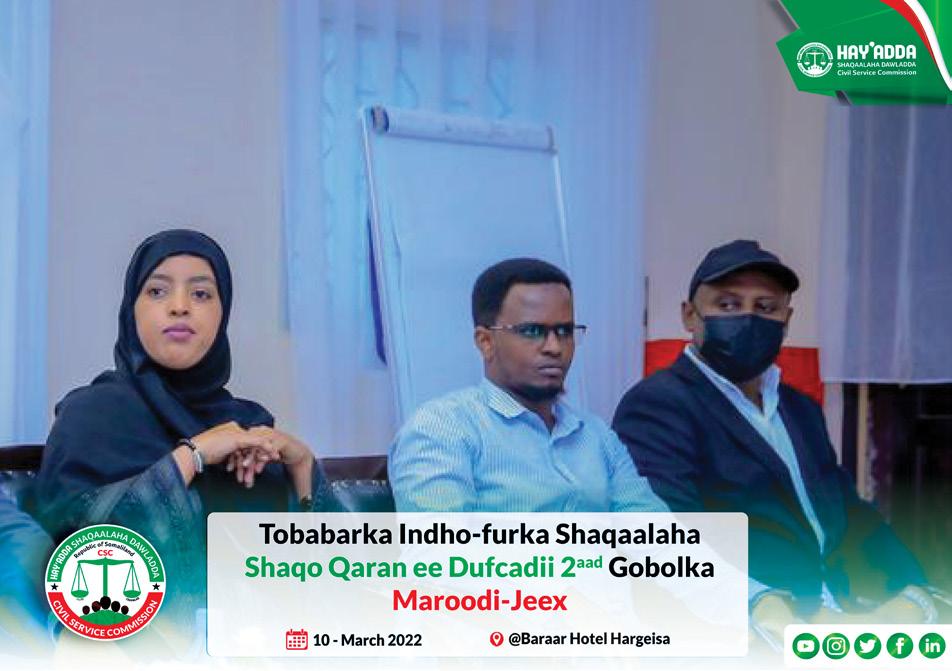


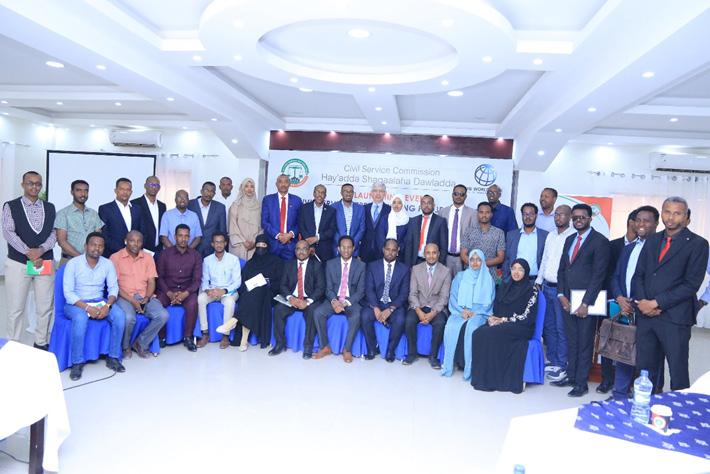
The Talent Management Program is a vital element of the civil service reform plan. This program was designed to give the Civil Service Commission an opportunity to mobilize individuals who are professionals and it is an engine for the civil service reform. TMPs Here is a brief summary of the main achievements of the TPM staff during the last quarter: • Played a pivotal role in the civil service reform plan. • Implemented a fairly and transparences recruitment system in Somaliland based on the needs of the institutions and talents of candidates.
• Recruited the second batch of TMP 20 staff and providing an induction training where new staff of the Talent Management Program was familiarized with the rules and regulations of the government institutions. • Conducted training for the Human Resource
Directors of the government institutions where they were trained on Recruitment, Performance and Civil Service Code of Conduct.
• Distributed Performance Work-plan forms to all Government Institutions to fill it and
Conducting CSC and CSI Performance WorkPlan
• Performance Appraisals of all civil service
Commission staff have been conducted and the best performers are rewarded • Completed the Monitoring & Evaluation tools and shared them with all the departments • Developed research themes for the Civil Service
Commission in the year of 2020 • Documented correct data of employees in the server for 15 MDA’s
In general, TMP staff have positively changed the organizational performance, either through direct contribution or in the longer term by demonstrating the highest levels of potential. TMPs continue to foster a culture which encourages initiative and innovation enabled by coaching and mentoring within a framework of collaboration and accountability and taking the role to be the best that can be in everything. In completion, the TMP performance is highly appraised and made significant changes in the level of the MDAs institutional performance.
Technical Committee Meetings Held
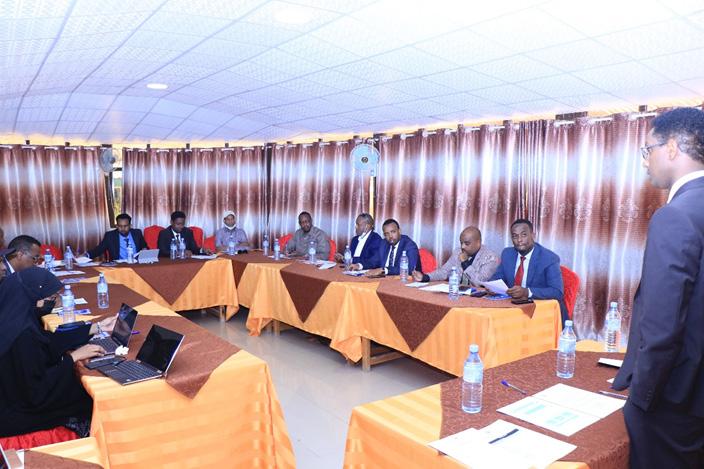
The Technical Committee, consisting of the Director Generals of the key Ministries, Departments and Agencies of the Somaliland government have been established to contribute to the technical aspects of the civil service reform. The committee meets on monthly basis to mainly discuss decide regarding the common issues and technical aspects of the ongoing civil service reform led by the Civil Service Commission.
Civil Service Strengthening Project uses the existing governance and management arrangements designed under the government’s Public Service Reform Strategy. The overall project implementation is led by the Civil Service Commission (CSC) in collaboration with the other MDAs to implement different components of the project. During the quarter of October – December 2021, the committee held several meetings chaired by the CSC Chairman to discuss pressing issues including implementation of MDA structures, HR Policies & Procedures, Capacity building programs, development of HRMIS, Public Pension System and other programs
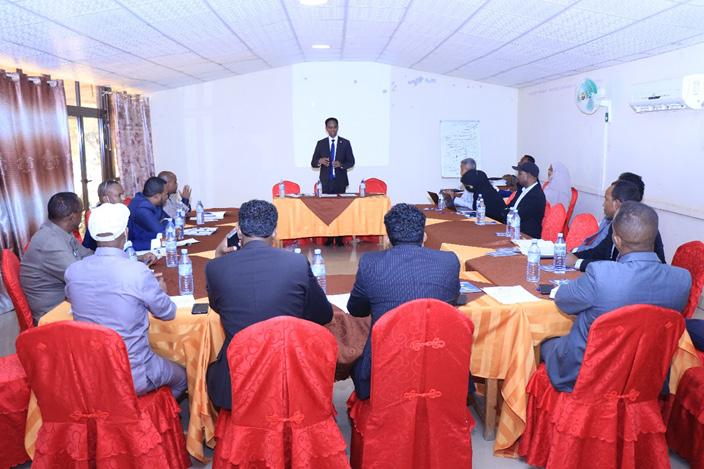
Civil Service Payroll Management
The Civil service Headcount and Payroll Management was intended to support Civil Service Commission (CSC) and Ministry of Finance Development (MoFD) to maintain a clean and accurate civil service payroll and to strengthen HR data management. The civil service strengthening project is intended to support the CSC build their capacity for monitoring, reporting, and auditing of payroll entries and exits in order to contribute to increasing the accuracy and predictability of the government’s wage bill. In 2018, the project successfully completed headcount and biometric registration of all civil servants under jurisdiction of CSC. This has enabled cleaning of Civil Service payroll and “ghost” workers are no longer in government payroll. Phase two of HR payroll Audit which counted newly entered staff for the period after the previous head count this was 3,465 servants. This was necessary to inform subsequent processes to align the HR requirements with the Somaliland government’s development aspirations as contained in the national development plan and strategic policies. The process that took place between January and April 2018 involved physical headcount of civil servants in all ministries, departments and agencies (MDAs) under the jurisdiction of CSC. The CSC has completed the development of an electronic database and established the national archives for civil servants and has started to create personal files for all civil servants (hard copies). So far, CSC has furnished 41 MDAs with a clean list of all “bonafide” public servants under its jurisdiction. The Civil Service Commission has also handed over to the Ministry of Finance Development the (SLFMIS) team a list of 41 MDAs and the list was uploaded into the system. The MDAs are supposed to use this information to create both soft and hard copies of employees’ Personal Files each bearing personal details, education qualification and current grade and salary of the employees. Most targeting MDAs have already created such personnel files for all cadres of their employees and produced hard copies back-up files for their employees. Furthermore, these personal records from all MDAs will be pieced together to set up the Human resource Management Information System (HRMIS) covering all public workers under CSC. The headcount process has also resulted in good progress has been made towards payroll control. Although the process is still largely manual, there is a good degree of integration and reconciliation between payroll and personnel records. Approved staff list, personnel database, and payroll are cross-checked to ensure budget control, data consistency, and monthly reconciliation. Current system is capable of controlling cases of double dipping for those who have been registered after the headcount process, it may not detect such cases for public workers who were not included in the headcount. The project was able to build the capacity of CSC, The Payroll Control Unit has to build capacity of the CSC for auditing of payroll entries and exits. This is expected to contribute to increasing the accuracy and predictability of the government’s wage bill. Development of Payroll Management Guide and Payroll Audit Management Manual has also been completed.
